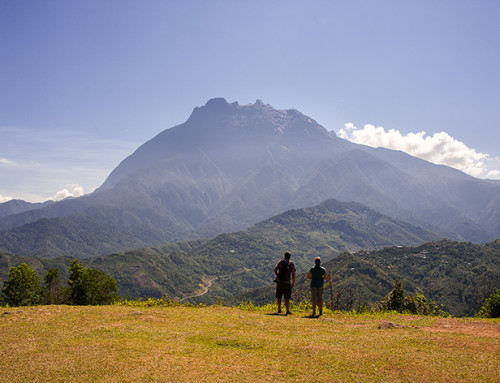Your research interests cover a diverse array of learning issues in higher education, including digital literacies, blended and personalised learning as well as the importance of designing conducive learning spaces. Could you share with us how you became interested in these issues?
 My journey as an educator has traversed a number of learning, teaching and educational research issues across the higher education landscape. Design has always been at the core of my work after studying instructional design in my PhD at the University of Calgary. Design by its nature gazes into the future and attempts to formulate and represent for a future use. It is a forward-looking perspective that attempts to enhance the learner experience. I have designed learning interactions in a diverse range of media and virtual learning spaces including multimedia, online learning and blended learning. My current focus is personalised learning and learning spaces. My ongoing focus investigates how learners adapt their mindset to the changing context of higher education learning and teaching in the digital age. Virtual learning spaces will be more prevalent in the digital age and the place of learning will be diverse spaces often outside the formal educational institution. Because the place of learning is now within physical spaces, virtual spaces and a blend of physical and virtual spaces it is essential to focus on the range of digital literacies needed to interact in these spaces.
My journey as an educator has traversed a number of learning, teaching and educational research issues across the higher education landscape. Design has always been at the core of my work after studying instructional design in my PhD at the University of Calgary. Design by its nature gazes into the future and attempts to formulate and represent for a future use. It is a forward-looking perspective that attempts to enhance the learner experience. I have designed learning interactions in a diverse range of media and virtual learning spaces including multimedia, online learning and blended learning. My current focus is personalised learning and learning spaces. My ongoing focus investigates how learners adapt their mindset to the changing context of higher education learning and teaching in the digital age. Virtual learning spaces will be more prevalent in the digital age and the place of learning will be diverse spaces often outside the formal educational institution. Because the place of learning is now within physical spaces, virtual spaces and a blend of physical and virtual spaces it is essential to focus on the range of digital literacies needed to interact in these spaces.
During the EiRP-Ruth Wong Memorial Lecture on Education, you mentioned that “the abundance of resources and relationships” brought on by emerging technological trends will challenge Being digitally literate involves students and teachers developing their digital identities in an age where our online presence can be as important as our physical presence in social and work environments. Digital identity focuses on how we represent or portray ourselves online. It includes the etiquette and ethics of communicating and doing business online, leading to safer and more engaged digital citizenship. There also needs to be a renegotiation of the learning relationship as learners now bring a rich tapestry of prior knowledge as they have become co-creators of knowledge and often bring diverse skills to learning. This prior knowledge influences the teacher-learner relationship and changes traditional approaches of teaching to a learning partnership that will have implications for the identities of both learners and teachers. You met with colleagues from a cross-section of the NUS academic community during your visit. From your discussions with them, what struck you as being best practices or ideas related to teaching and learning at NUS. What do you see as challenges in higher education over the next 5 to 10 years? Would it still be closely related to emerging technologies or would it be something else altogether? We will also see an emphasis on the need for digital literacies as learners traverse seamlessly across diverse learning spaces both within and outside the formal learning institution. Learning spaces represent ubiquitous spaces in which the learner undertakes some form of study or learning. Learners will require digital literacies that will encompass knowledge, skills and attitudes that will enable individuals to learn, work, live, play and interact more effectively in the digital age. Personalised learning strategies encompass a range of knowledge, skills and attitudes that empower the learner to take charge of their learning within learning spaces. There is a convergence occurring in many fields but I believe we need to examine how educators can support learning through regular feedback using learning analytics. What continues to inspire and fascinate you as an educator? References: The digital age is characterised by ubiquitous information available on the Internet and accessible to educators and learners 24/7. Both educators and learners will need to become discerning consumers of Internet information. The concept of user-generated content and the growth of social media partially explains the reason for this change as Internet users have become producers of content. Next generation learners have an inherent need to express themselves through multiple avenues which utilise user-generated content. This content includes artefacts created by the student that are uploaded to the Internet for sharing with other people in the learners network. Common examples include photos, video and blog posts but also include the prolific range of Facebook, Twitter, Instagram and Pinterest posts. There has been a fundamental shift towards creating content, which has been enabled by the low cost hardware and software. A plethora of tools for users has allowed everyone to be a publisher, designer, or commentator. Learners are beginning to own the place and space of learning and their identities are changing from consumers of knowledge to producers or designers of content and knowledge. Due to this abundance of resources educators and learners now need digital literacy skills to access ‘knowledge in the network’. Knowledge acquisition now focuses on networks and ecologies, and knowledge now requires literacies in networking (Siemens, 2006).
The digital age is characterised by ubiquitous information available on the Internet and accessible to educators and learners 24/7. Both educators and learners will need to become discerning consumers of Internet information. The concept of user-generated content and the growth of social media partially explains the reason for this change as Internet users have become producers of content. Next generation learners have an inherent need to express themselves through multiple avenues which utilise user-generated content. This content includes artefacts created by the student that are uploaded to the Internet for sharing with other people in the learners network. Common examples include photos, video and blog posts but also include the prolific range of Facebook, Twitter, Instagram and Pinterest posts. There has been a fundamental shift towards creating content, which has been enabled by the low cost hardware and software. A plethora of tools for users has allowed everyone to be a publisher, designer, or commentator. Learners are beginning to own the place and space of learning and their identities are changing from consumers of knowledge to producers or designers of content and knowledge. Due to this abundance of resources educators and learners now need digital literacy skills to access ‘knowledge in the network’. Knowledge acquisition now focuses on networks and ecologies, and knowledge now requires literacies in networking (Siemens, 2006). During the visit I focussed on dialogue and discussions with NUS staff on a diverse range of areas including blended learning, digital literacies, personalised learning, learning-oriented assessment and learning spaces through consultations with staff. I participated in around 30 consultations with over 100 staff. Assessment is always the most controversial area as it performs a number of different roles. Learning-oriented assessment is one approach that has potential as an alternative to an emphasis on assessment-of-learning approaches. I was most impressed by the attitude of the academic community which was inquisitive and quality-focussed. There was an acceptance of seeking new ideas or co-creating ideas during the discussions. NUS has an enviable IT infrastructure with ubiquitous wi-fi across the campus including the campus buses allowing staff and students to connect 24/7. I believe NUS is pioneering work in trialling bring-your-own-device (BYOD) for assessment. I was also impressed by the NUS teaching academy which provides an excellent forum for dialogue and exchange of educational ideas across disciplines. The formulation of the academy demonstrates the importance of learning and teaching within the culture of NUS. What struck me as being most impressive was the dialogue and discussion about learning across the Institution and dialogue about learning by senior management at NUS. Learning and teaching is highly valued by the NUS community.
During the visit I focussed on dialogue and discussions with NUS staff on a diverse range of areas including blended learning, digital literacies, personalised learning, learning-oriented assessment and learning spaces through consultations with staff. I participated in around 30 consultations with over 100 staff. Assessment is always the most controversial area as it performs a number of different roles. Learning-oriented assessment is one approach that has potential as an alternative to an emphasis on assessment-of-learning approaches. I was most impressed by the attitude of the academic community which was inquisitive and quality-focussed. There was an acceptance of seeking new ideas or co-creating ideas during the discussions. NUS has an enviable IT infrastructure with ubiquitous wi-fi across the campus including the campus buses allowing staff and students to connect 24/7. I believe NUS is pioneering work in trialling bring-your-own-device (BYOD) for assessment. I was also impressed by the NUS teaching academy which provides an excellent forum for dialogue and exchange of educational ideas across disciplines. The formulation of the academy demonstrates the importance of learning and teaching within the culture of NUS. What struck me as being most impressive was the dialogue and discussion about learning across the Institution and dialogue about learning by senior management at NUS. Learning and teaching is highly valued by the NUS community. Major challenges in the next 5-10 years will focus on supporting personalised learning through technology and learning analytics. Examples of the creation of a personalised experience come in the realm of sport. For example FitBit is a 24/7 fitness tracker that monitors steps each day, sleep and a range of other parameters. The Garmin wrist-mounted GPS provides feedback in relation to running pace, heart rate, and distance. For many drivers we are literally lost without our GPS-enabled Tom Tom. These devices provide personalised feedback to the user that can be acted on by the user to improve fitness or navigate more efficiently to a destination. These principles need to be embraced in higher education assessment by focussing on learning-oriented assessment. Learning-oriented assessment has three core aspects: Assessment tasks as learning tasks; Student involvement in the assessment processes; and Forward-looking feedback (Carless, Joughin, Liu, & Associates, 2006). Assessment tasks as learning tasks focus on creating assessment that encompasses the learning outcomes for the course. By involving students in the assessment process the student becomes aware of the characteristics and features of assessment. By providing feedback that can be acted on by the student we are providing forward-looking feedback. Because all assessment leads to some form of learning it is important to thoughtfully design assessment in order to encourage the types of learning outcomes that we value and desire (Carless, 2007; Keppell & Carless, 2006; Boud, 1995, 2010).
Major challenges in the next 5-10 years will focus on supporting personalised learning through technology and learning analytics. Examples of the creation of a personalised experience come in the realm of sport. For example FitBit is a 24/7 fitness tracker that monitors steps each day, sleep and a range of other parameters. The Garmin wrist-mounted GPS provides feedback in relation to running pace, heart rate, and distance. For many drivers we are literally lost without our GPS-enabled Tom Tom. These devices provide personalised feedback to the user that can be acted on by the user to improve fitness or navigate more efficiently to a destination. These principles need to be embraced in higher education assessment by focussing on learning-oriented assessment. Learning-oriented assessment has three core aspects: Assessment tasks as learning tasks; Student involvement in the assessment processes; and Forward-looking feedback (Carless, Joughin, Liu, & Associates, 2006). Assessment tasks as learning tasks focus on creating assessment that encompasses the learning outcomes for the course. By involving students in the assessment process the student becomes aware of the characteristics and features of assessment. By providing feedback that can be acted on by the student we are providing forward-looking feedback. Because all assessment leads to some form of learning it is important to thoughtfully design assessment in order to encourage the types of learning outcomes that we value and desire (Carless, 2007; Keppell & Carless, 2006; Boud, 1995, 2010). I am fascinated by the range of opportunities that are now available for learning through virtual learning spaces, continuing education and the move toward more life-long learning. I am particularly fascinated by the clever technology being developed that will enhance our ability to communicate more effectively in the digital age. We now have an ability to communicate effectively across landscapes and timescapes (different time zones) through mobile technology, Skype, etc. I am inspired by the use of social media and the rich range of expression spaces that we can now utilise for communicating, disseminating our research and co-creating knowledge. We have an ability to connect across the globe and widen our influence to provide education to a wider range of people particularly in developing countries via cost-effective technology and connectivity. The use of social media through Slideshare, blogging and Linked-In has provided a means for educators to communicate, disseminate and share their ideas as they are created as opposed to the time delay in accessing research findings from traditional academic journals and conferences. A next phase will be to learn how to filter the increasing volume of information that is available via the Internet and communication channels. We will need to learn how to be mindful about what we prioritise in relation to multiple channels of communication and social media that are competing for our attention.
I am fascinated by the range of opportunities that are now available for learning through virtual learning spaces, continuing education and the move toward more life-long learning. I am particularly fascinated by the clever technology being developed that will enhance our ability to communicate more effectively in the digital age. We now have an ability to communicate effectively across landscapes and timescapes (different time zones) through mobile technology, Skype, etc. I am inspired by the use of social media and the rich range of expression spaces that we can now utilise for communicating, disseminating our research and co-creating knowledge. We have an ability to connect across the globe and widen our influence to provide education to a wider range of people particularly in developing countries via cost-effective technology and connectivity. The use of social media through Slideshare, blogging and Linked-In has provided a means for educators to communicate, disseminate and share their ideas as they are created as opposed to the time delay in accessing research findings from traditional academic journals and conferences. A next phase will be to learn how to filter the increasing volume of information that is available via the Internet and communication channels. We will need to learn how to be mindful about what we prioritise in relation to multiple channels of communication and social media that are competing for our attention.






Leave A Comment